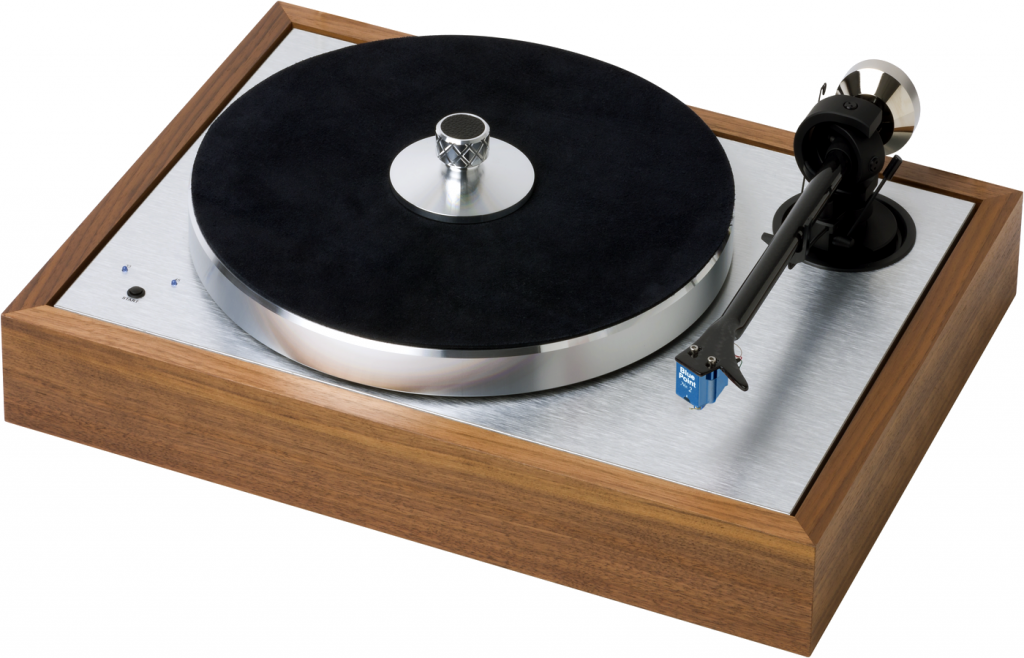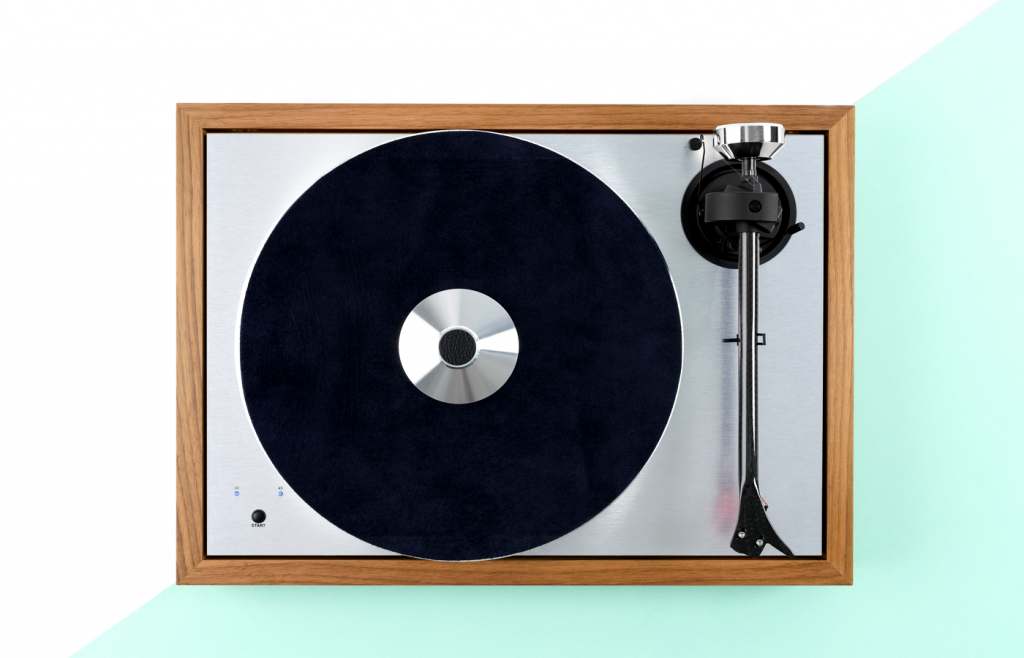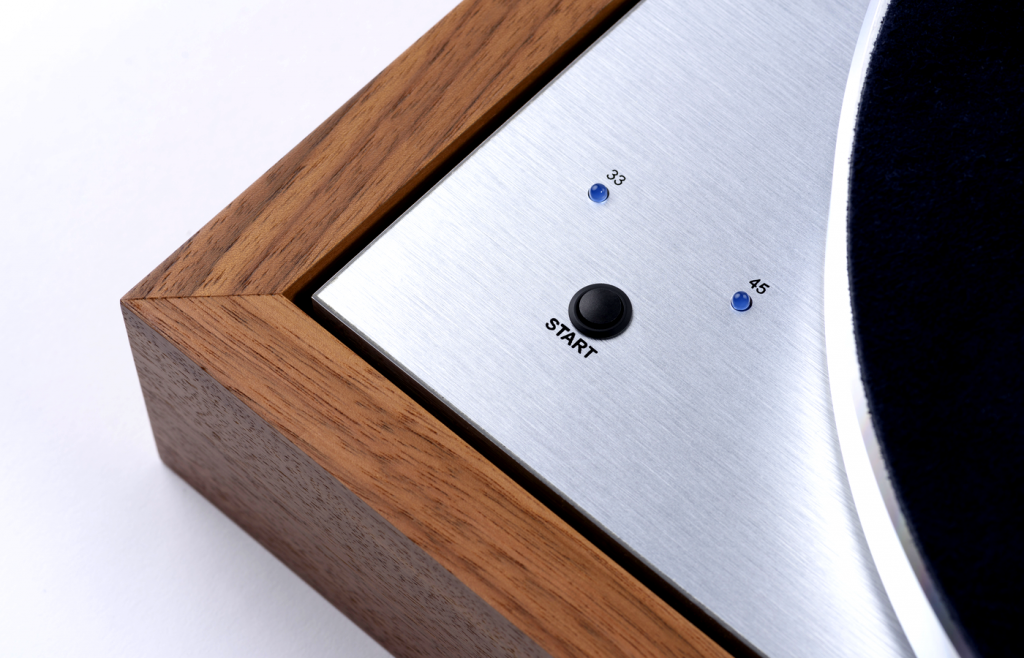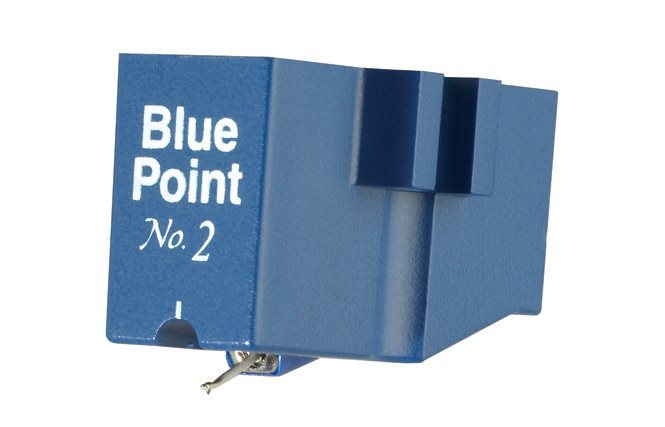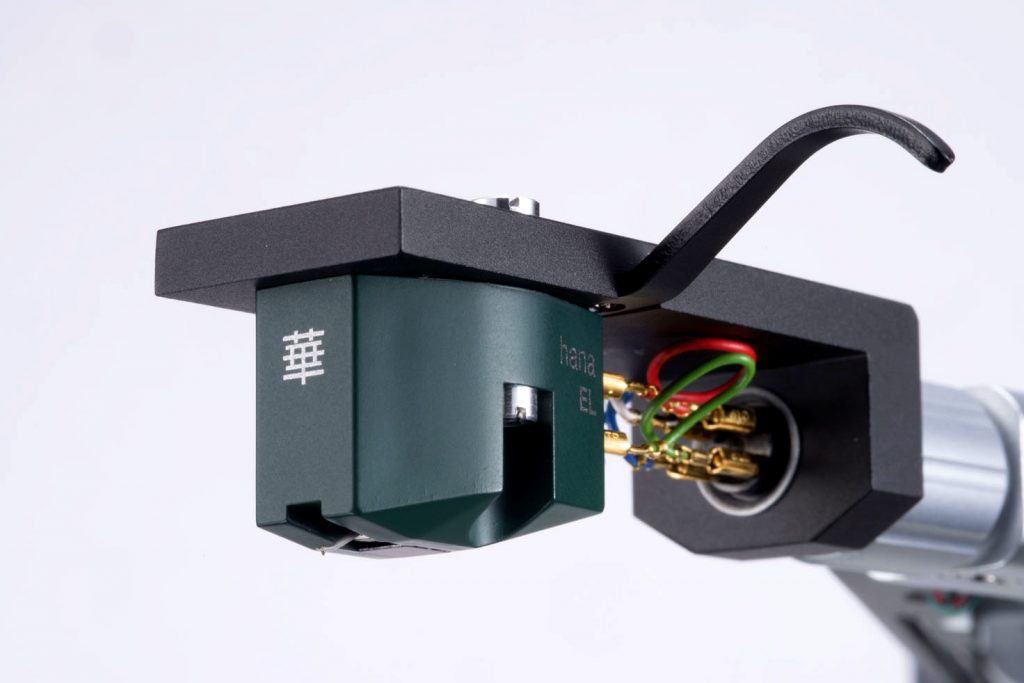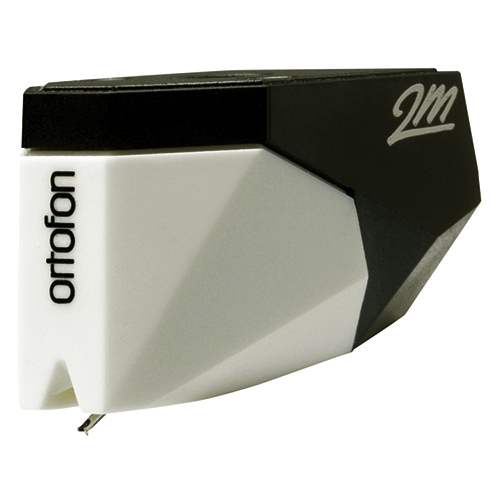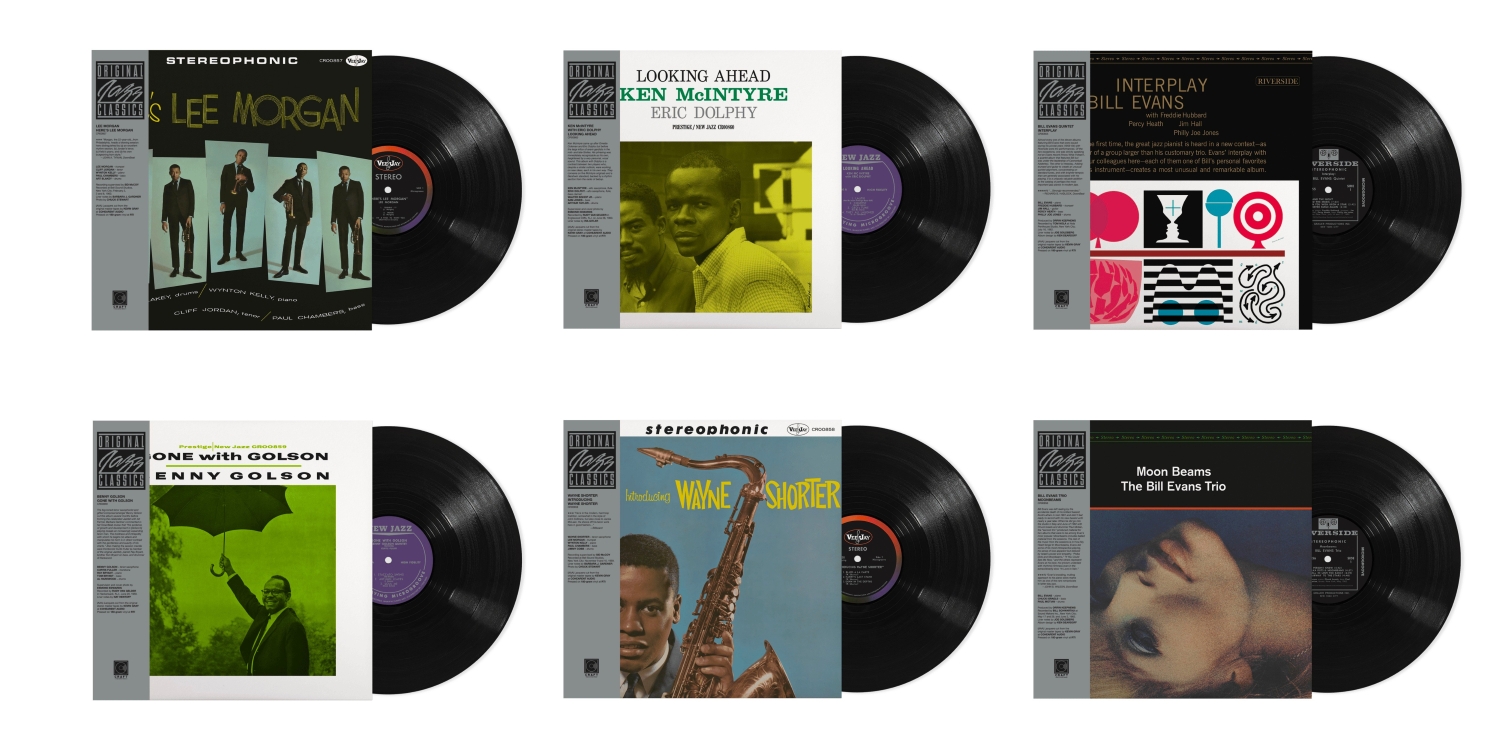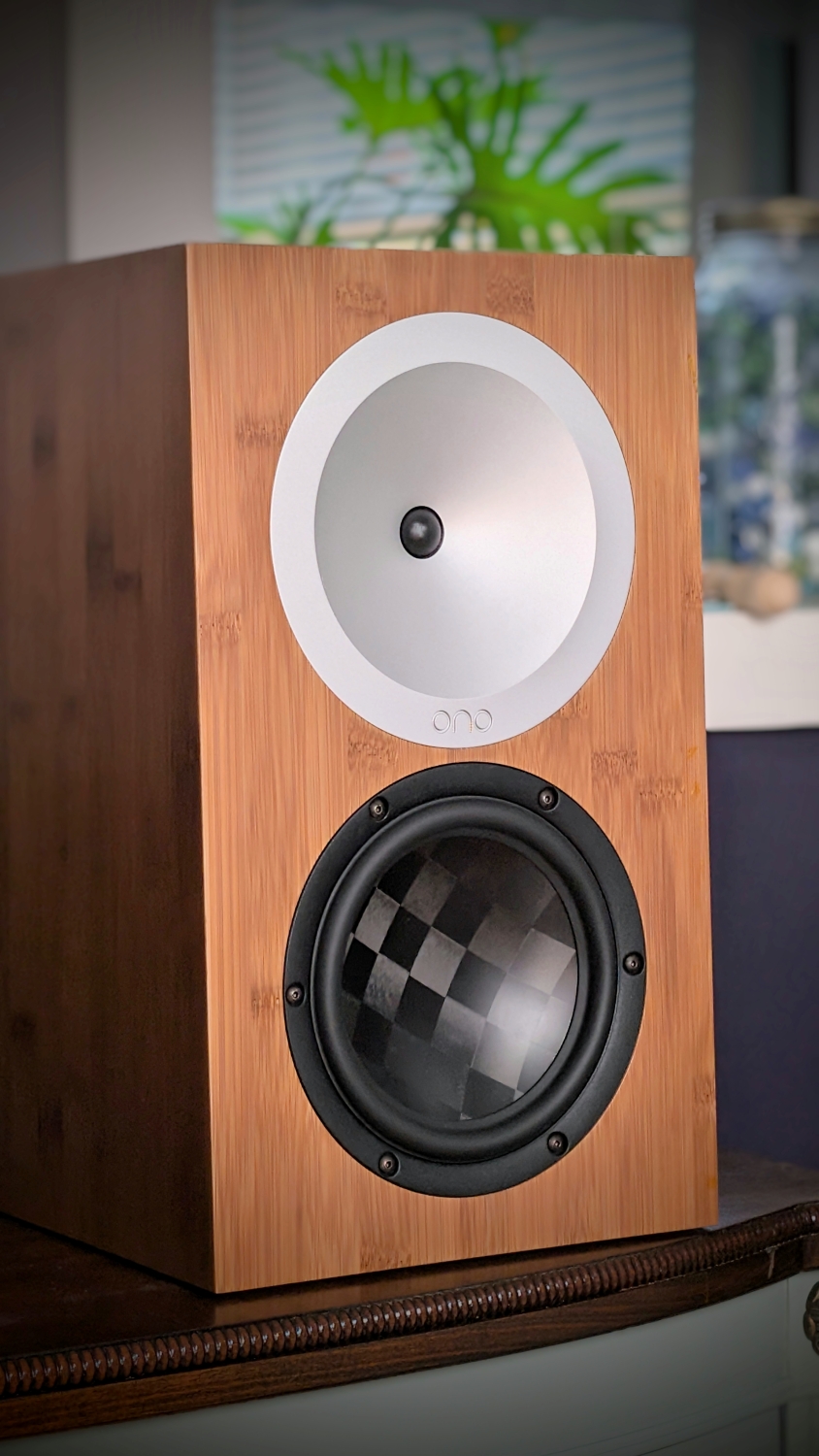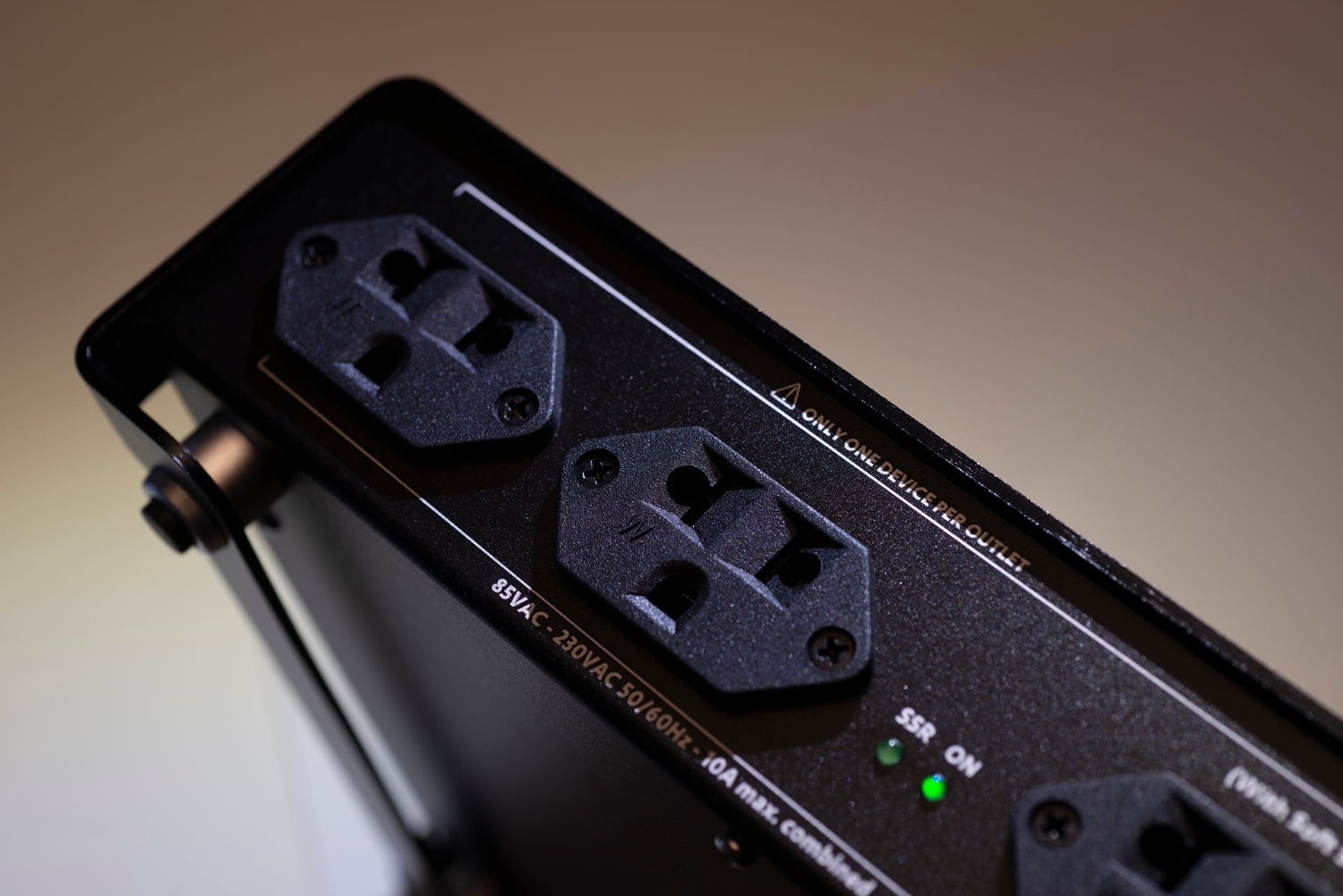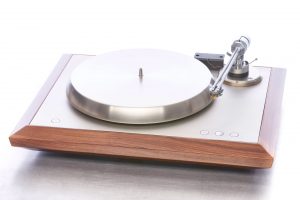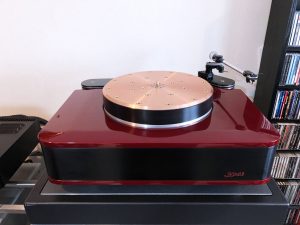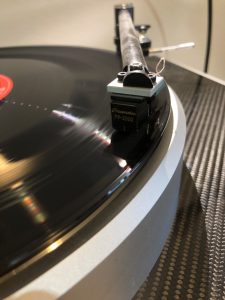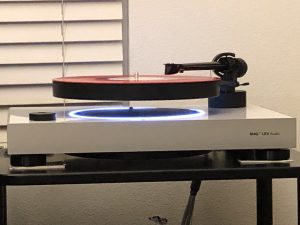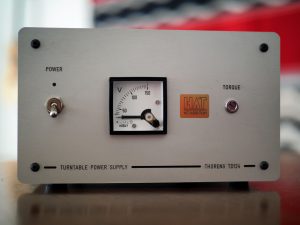Despite my growing fascination with all things computer/network audio, I've always loved the sound of vinyl and still spend a fair amount of time spinning LPs. Even considering the many acoustic and mechanical flaws either inherent or possible with vinyl reproduction, the sound of a well-played LP has an almost intoxicating quality that's near impossible to ignore. Digital playback has made important gains in terms of sound quality and retrieval of micro-and macro-dynamics, but a really great LP played on a great table can offer a degree of listening satisfaction that digital often only provides a glimpse of.
I've owned a Rega P2 for over a decade now; it's a decent table that provides reasonably satisfying results from the relatively simplistic "less is more" philosophy of its British designers. Over the years, I've upgraded various elements that have helped lift its level of performance even higher. And that's despite the undercurrent I've been sensing over the years that basically declares that it's folly to throw additional money at what's essentially a "budget" table. In a nutshell: cut your losses and frustrations and just get yourself a better turntable.
The first time I saw an ad for the Pro-Ject The Classic, I immediately knew I wanted the opportunity to review it. For starters, it looked a whole lot like classic turntables from the heyday of vinyl (think 50s and 60s) from the likes of Linn or Thorens, and its $1100 (USD) base price isn't out of reach for many who'd like a bit more of a taste of the high end. Pro-Ject is one of the world's largest turntable manufacturers, after all. And despite my leanings toward the Rega design philosophy (with regard to affordably priced tables), it seemed like the perfect time to experience what Pro-Ject could offer listeners at this price point. An email to Sumiko (Pro-Ject's North American distributor) yielded a fairly quick contact with Tram Nguyen, their Pro-Ject USA Marketing Coordinator. She offered a unit for review, and within a few weeks it arrived at my doorstep.
I was standing in my front yard with a chainsaw in hand when the FedEx truck pulled up mid-morning; the box they unloaded was freaking huge! After I signed for it, the guy rolled it into my garage and I continued to saw away at the 30-foot long, 36-inch diameter tree trunk lying across my yard, and didn't crack into the package until much later that evening. A quick scan of the shipping invoice revealed that I'd just received the SB Superpack model—whatever that meant—but it only took getting part of the way into the inner box to realize that what was sent was way beyond the baseline The Classic that had been requested.
The Classic SB, or Superpack edition (as it's more commonly known) upgrades the baseline model in a number of key areas; most importantly, it adds internal electronic speed control. Pro-Ject sells several outboard "Speed Boxes" that retail anywhere upwards of $150, but having it built in adds a distinctly more elegant touch and frees the user from needing to manually changing the belt pulley to change the table's speed. In this instance, it's particularly nice, as one would need to hoist the considerably hefty aluminum platter from the table every time a speed change was necessary. Pro-Ject provides a pair of white cotton gloves for handling the platter, which is a nice touch, as it's polished to a stunningly brilliant shine and fingerprints quite easily. Also included with the Superpack is a really nice leather mat, along with a heavy-duty precision clamp, if you're so inclined to clamping your records. And a very well-made, low-capacitance interconnect is supplied, as well.
Last, but certainly not least, is the provided cartridge upgrade; the Superpack European model offers a pre-installed Ortofon Quintet Red low-output moving coil model. Sumiko has chosen to replace it on the North American edition with one of their own, the Blue Point No. 2, a high-output moving coil model that retails for $450. All total, you're getting about $860 worth of upgrades for an additional $399, making it quite a compelling value, indeed. The upgrades alone provided by the Superpack are valued at significantly more than the entire cost of my Rega table and all the upgrades I installed to it over the years! The baseline The Classic model comes equipped with an Ortofon 2M Silver installed, which is basically just the entry-level 2M Red rewired with silver wiring. So for an accurate price comparison, you'd need to back out the cost of that cartridge ($100 or-so-dollars) compared to the cost of the Sumiko Blue Point No. 2 supplied with the Superpack edition.
As I began to unpack The Classic, I couldn't help but admire the precision of the packing materials; the outer box arrived with a considerable dent in it, but the inner box was so well-constructed that it showed no wear for the worse. The provided white gloves were very near the top of the package, and it became pretty obvious to me that I needed to be wearing them to help maintain the pristine appearance of the new table during assembly. In a previous lifetime, I owned a Linn table, and while the Pro-Ject does bear an uncanny resemblance, that's about as far as the comparison would go. That was over twenty years ago, but the Pro-Ject table, in my estimation, is every bit as well-constructed as the Linn, and in many ways, perhaps even more so (Linn owners cry "Heresy!"). While the cartridge is pre-mounted, some assembly is required, including mounting the platter, attaching the counterweight to the tonearm, and attaching the anti-skate weight. You also have to balance the tonearm and set the tracking force with the supplied gizmo, which is not extremely elegant. I'd suggest getting a digital tracking force scale, they're only about $30 these days from Music Direct and other reputable vendors. Last up is mounting the considerably hefty dust cover to the unit. Weighing in at 23lbs, the weight and heft of The Classic is substantial when compared to most current turntables that fall into the reasonably affordable category. After assembling The Classic I had to stand back for a moment and gaze in admiration. The fit and finish, construction details and overall appearance easily makes it the best-looking, most well-built turntable ever to grace my listening room.
The casement of the plinth is solid wood on four sides, and the base is a thick slab of MDF; the real wood gives the unit a very nice look. And you have wood color choices available; while my review unit shipped with a very elegant-looking walnut finish, you also have a choice of either rosenut or eucalyptus woods. The real-wood base is definitely a homage to the glory days of analogue, but despite its elegance and beauty, there's more than meets the eye. Underneath the floating sub-chassis is a sophisticated TPE (thermo plastic elastomer) suspension system that delivers a truly effective floating suspension without the need for occasionally troublesome springs. The floating chassis is a sandwich of metal on top and MDF underneath, and additional TPE damping can be found in the adjustable feet and the highly-polished counterweight. There's also a large ring of TPE embedded in the circumference of the aluminum platter to help reduce the chance of any vibration-induced ringing.
If I have a complaint right out of the gate, it's the lack of any type of mechanism to secure the tonearm to its rest. From the factory, it's attached with a plastic twist-tie—yes, that's right—as graceful an aluminum and carbon-fibre composite tonearm as I've ever laid eyes on is attached to its rest with a plastic twist-tie! Granted, this is the kind of table that most audiophiles—once getting it into their listening rooms—will probably not want to part with, and apart from moving to a new location, will probably never feel the need to move the table. But there are going to be instances—like changing the cartridge, for example—that demand the arm be secured to its rest. I don't typically have small children around the house, and I don't expect that anything short of an earthquake could inadvertently move the arm from the rest, but I still think it's an odd omission from such an otherwise perfectionist product.
The tonearm is an aluminum/carbon fibre composite, and employs Japanese-made ultra low friction Zircon pinpoint cardan bearings. Both azimuth and VTA are fully adjustable, though the VTA adjustment isn't "on the fly" and requires an allen key with a shortened tip (supplied). Adjusting VTA with this table isn't exactly a walk in the park; the location of the allen screw is in a recessed well at the base of the tonearm and is ever-so-slightly less than easily accessible. Making the ability to make quick VTA adjustments challenging at best. And the attached counterweight, while very pretty, is also very heavy. And there's no supplied information either in the turntable documentation or on Pro-Ject's website that offers the available cartridge weight range—I was lucky when switching carts that the three I used were relatively close in range. Fortunately there was enough room on the arm stub to balance the arm and set the appropriate stylus pressure for each cartridge.
Starting the turntable's motor is a bit tricky and requires a little patience to get the hang of. On the baseline The Classic version, there's simply a power switch on the left of the metal subchassis, but on the Superpack edition, the switch is replaced by a small button that controls both power and speed selection. You press the button once and a blue LED illuminates, and the turntable's motor runs up to 33.3 RPMs. Press the button a second time and the speed increases to 45 RPMs. Pressing and holding the button a third time will power the turntable's motor down. I know this sounds pretty simple, but trust me, it's taken about three months of regular use to get the sequence down pat—there's an element of precise "touch" involved that makes the sequence more than just a bit challenging. I can't begin to tell you how many times I've attempted to turn the table off, only to have the motor push the RPMs up to 45!
The supplied Lucite dust cover is fairly heavy, with significantly stiff hinges. I know that there are two camps with regard to dust covers: always on, or always off. Without going into the if, ands, or buts, I tend to fall into the always on category. The dust cover suspension is perfect for that approach; I power the turntable on, then dust the record's surface with the new AudioQuest carbon fibre record brush. I then brush the stylus and apply Stylast preservative (it really works!) before each play. The dust cover hinges are sufficiently stiff that I can lower it to two-thirds of the closed position, then lower the cueing lever (also fairly well-damped), then close the cover completely and reach my seat generally as the record starts playing. Brilliant!
I have a fairly ancient vertical Target equipment rack that the turntable sits on; it's placed there on top of a Bright Star Big Rock sand-filled isolation platform. Between the rack and the platform, a really good degree of isolation is provided and I can listen to just about anything at any volume level with no feedback issues. I'd like to eventually get or build something more horizontally oriented that would allow for placement of two turntables on the top shelf; one for stereo and one strictly for mono. Nowadays, so few tables contain arms that allow for headshell replacement, and it's quite the hassle to replace the cartridge on a regular basis.
So, in the beginning, I ran with the premounted Sumiko Blue Point No. 2 cartridge. Garth Leerer at Musical Surroundings was sending me the new Hana EL cartridge for review (review forthcoming), but there was a snafu early on, and they sent the wrong cartridge. Besides, having zero experience with Sumiko cartridges, this would give me a great window of opportunity to decide for myself how I really felt about the Blue Point No. 2. Also, for the first week, I was using a Schiit Mani phono preamp; despite its budget lineage, it's actually a pretty good pre for less than $100. After week one, the Sutherland KC Vibe phono preamp showed up (review also forthcoming); that really lifted the listening experience into another stratosphere altogether.
Like I said, I have no experience with Sumiko cartridges, but over about a twenty year period, I've read either online or in print literally dozens of polarizing reviews: you either seem to love the Blue Point, or you hate it. With very little in between. About fifty percent of those offering reviews feel the Blue Point family of cartridges is the best thing ever, and a tremendous value for the money; the other half seem to feel that they possess a steely top-end, with so-so imaging and soundstage, and a lot better can be had for the same money. Armed with that trove of information, I basically just started playing records that I listen to often. And that I think I have a good feel for how they should sound, really just to let the Blue Point No. 2 break in somewhat.
To my great surprise, cold, and out of the box, the Blue Point No. 2 didn't strike me as anything nearly as maligned or aggressive as I'd been led to believe by copious numbers of naysaying posters and reviewers out there. It actually sounded surprisingly nice, with superb tracking abilities and a really warm sounding midrange and top end. Most of the records I played sounded pretty superb, with very little groove modulation noise, and very few pops and clicks of any kind either with older or newer LPs. How much of that is owing to a having the Blue Point No. 2 mounted in a really great turntable, and played through an exceptional phono preamp (that was set to Sumiko's preferred load specification) is definitely something to consider. Regardless, in the month or so that I listened to the Blue Point, I never felt that it didn't acquit itself admirably with any of the material I played. I found the sound very natural and engaging, and it was a superb tracker.
When the Hana EL cartridge finally arrived, I was eager to get underway, so I pulled out my MoFi Geo Disc and proceeded to remove the Blue Point and with setup of the Hana. The Hana EL is somewhat lighter than the Blue Point, weighing in at only 5 grams compared to the Blue Point's 6.3 grams, but fortunately the counterweight supplied with The Classic worked perfectly. I've found with many years of use that the Geo Disc is a really accurate alignment tool, and it only took a short while to get the Hana mounted properly; I set the tracking force to 2 grams as recommended by the manufacturer. The cartridge body height of the Hana matches that of the Blue Point almost perfectly, so once aligned, I didn't feel any need to adjust the VTA. Not to continue flogging a dead horse, but it would have been much more comfortable performing this operation with the arm tube firmly clamped to its post. I also needed to reset the Sutherland KC Vibe to the specified settings for the Hana; this required removing the cover and resetting the jumpers for the MC cartridge.
Over the last ten years or so, I've collected (and inherited!) hundreds of records, old and new. And I've developed a fairly good method for cleaning older records such that, unless damaged irreparably, generally playback with surprising clarity. Playing a record is almost a ritual; cleaning, brushing, and stylus care are only part of the overall process. Despite the level of care and involvement, the reward is hearing your favorite records played with utmost fidelity; it can be quite nearly comparable to hearing the actual source tape played. Everything contributes; the tonearm and table, the phono preamp, and quite possibly, most importantly, the cartridge. A really great cartridge has the capacity to elevate your system exponentially.
The Hana EL is quite possibly that cartridge. At its price point of $475 (USD), it's an exceptional value for a really high-performance low-output moving coil cartridge. As I began to play the same records that I'd been playing throughout the previous month via the Blue Point, I couldn't help but notice that the Hana EL did so very many things so very well. Even though the EL only employs an elliptical stylus tip (for which I have not been able to find the tip dimensions!), it does a remarkable job of tracing the record groove. And the great thing about the Hana is that it seems to draw you further into the music; instead of simply listening to a great record with the Blue Point No. 2, listening through the Hana makes you feel as though you're part of the experience.
There's a much greater degree of delicacy and transparency involved; whereas before, you were just thinking how great the record sounded, with the Hana, you tend to forget you're listening to a record. The tracking of the Hana EL is nothing short of superb; even with older or recently purchased used records, the Hana traverses the record groove and maximizes the music while minimizing any flaws or groove noise. The Hana literally transports you to the recording venue; it's like way back in the day, when I'd get stoned and then listen to records. My mind had been freed by the weed, allowing me to hear much more deeply, while having the music seemingly affecting all my senses simultaneously. With the Hana EL, no weed is necessary to get the same effect. With an analogue setup like Pro-Ject's The Classic paired with the Hana EL—that totally blows away any previous vinyl playback rig I've ever owned in the past—it's probably a good thing that I don't live in Colorado or California! Too much temptation!
Of course, the magnificence of a great cartridge like the Hana EL would probably only be marginally made manifest if attached to a mediocre tonearm. I know I've complained about a few of the shortcomings of the arm supplied with this table, but those are really more along the line of inconveniences and are not at all subtractive of the overall level of performance of the arm. Bob Levi of Positive Feedback posted a capsule review recently of a similarly-priced Pro-Ject table (the $1199 USD 2Xperience SB) where he flat-out raved about the qualities, capabilities, and adjustability of the arm. He paired it with $6500 cartridges from Koetsu and Benz, swearing that it outperformed the arms on any comparably equipped and priced table from VPI, Thorens, or Rega. I know that my system doesn't come close to occupying the rarified air that Bob Levi's system does. But I have to feel pretty confident in the pronouncements of a man who can reach into his closet and pull out a $6500 Koetsu cartridge for testing on a $1200 turntable!
I mentioned that I used three cartridges in this review; I also own and listen to quite a few mono recordings, so I also mounted the excellent Ortofon 2M Mono cartridge that I used for a piece in PF a couple of years ago on mono reproduction, in particular, the Beatles Mono Box, which can be found HERE. Based on my experience with the 2M Mono mounted in my Rega table, the outcome wasn't much different from my findings with stereo cartridges; there was literally more of everything. You tend to think of mono as being less of everything, and that's not particularly true; mono to me just tends to sound different, and sometimes better. Having listened to mono records on The Classic from the likes of The Beatles, Donovan, Miles Davis, and Cannonball Adderley, among others, I'm just not certain I'll be able to go back to the old Rega again!
Great analogue playback isn't as simple as a great arm, or cartridge, or transport mechanism, or resonance reduction through a great base; you need everything. And for me, at this point, everything is personified by Pro-Ject's The Classic, especially when paired with the Hana EL cartridge and the Sutherland KC Vibe phono preamp. The Classic SB Superpack comes very highly recommended; the upgrades take an already superlative table and propel it into the stars.
The Classic SB Turntable
Retail: $1499 (USD)
Pro-Ject Audio Systems
All images courtesy of Pro-Ject, Sumiko, Ortofon, and Musical Surroundings




